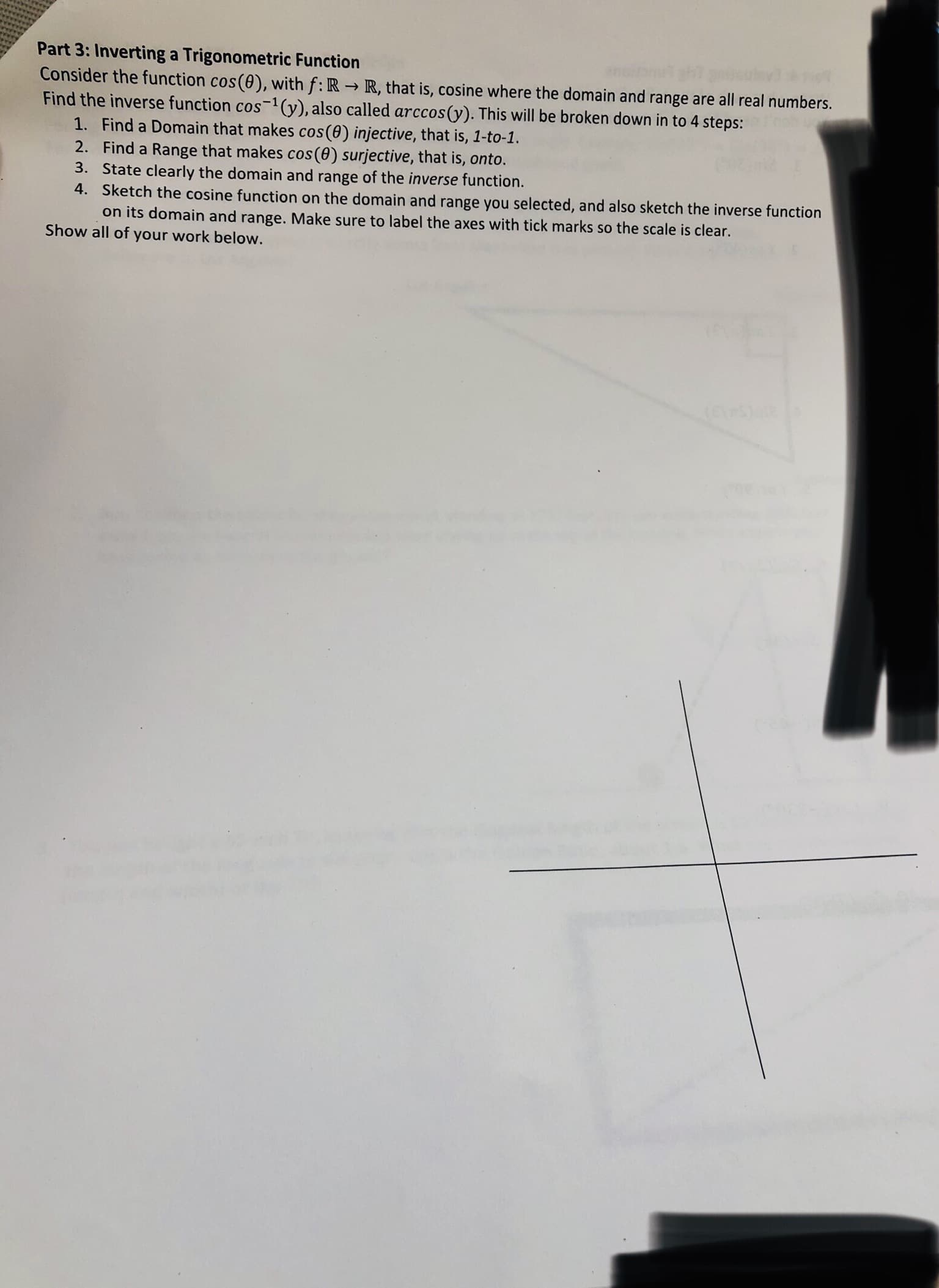Part 3: Inverting a Trigonometric Function Consider the function cos(0), with f: R R, that is, cosine where the domain and range are all real numbers. Find the inverse function cos-1(y), also called arccos(y). This will be broken down in to 4 steps: 1. Find a Domain that makes cos(0) injective, that is, 1-to-1. 2. Find a Range that makes cos(0) surjective, that is, onto. 3. State clearly the domain and range of the inverse function. 4. Sketch the cosine function on the domain and range you selected, and also sketch the inverse function on its domain and range. Make sure to label the axes with tick marks so the scale is clear. Show all of your work below.
Part 3: Inverting a Trigonometric Function Consider the function cos(0), with f: R R, that is, cosine where the domain and range are all real numbers. Find the inverse function cos-1(y), also called arccos(y). This will be broken down in to 4 steps: 1. Find a Domain that makes cos(0) injective, that is, 1-to-1. 2. Find a Range that makes cos(0) surjective, that is, onto. 3. State clearly the domain and range of the inverse function. 4. Sketch the cosine function on the domain and range you selected, and also sketch the inverse function on its domain and range. Make sure to label the axes with tick marks so the scale is clear. Show all of your work below.
Algebra & Trigonometry with Analytic Geometry
13th Edition
ISBN:9781133382119
Author:Swokowski
Publisher:Swokowski
Chapter7: Analytic Trigonometry
Section7.6: The Inverse Trigonometric Functions
Problem 65E
Related questions
Question

Transcribed Image Text:Part 3: Inverting a Trigonometric Function
Consider the function cos(0), with f: R R, that is, cosine where the domain and range are all real numbers.
Find the inverse function cos-1(y), also called arccos(y). This will be broken down in to 4 steps:
1. Find a Domain that makes cos(0) injective, that is, 1-to-1.
2. Find a Range that makes cos(0) surjective, that is, onto.
3. State clearly the domain and range of the inverse function.
4. Sketch the cosine function on the domain and range you selected, and also sketch the inverse function
on its domain and range. Make sure to label the axes with tick marks so the scale is clear.
Show all of your work below.
Expert Solution
This question has been solved!
Explore an expertly crafted, step-by-step solution for a thorough understanding of key concepts.
Step by step
Solved in 4 steps with 4 images

Recommended textbooks for you

Algebra & Trigonometry with Analytic Geometry
Algebra
ISBN:
9781133382119
Author:
Swokowski
Publisher:
Cengage

Algebra & Trigonometry with Analytic Geometry
Algebra
ISBN:
9781133382119
Author:
Swokowski
Publisher:
Cengage